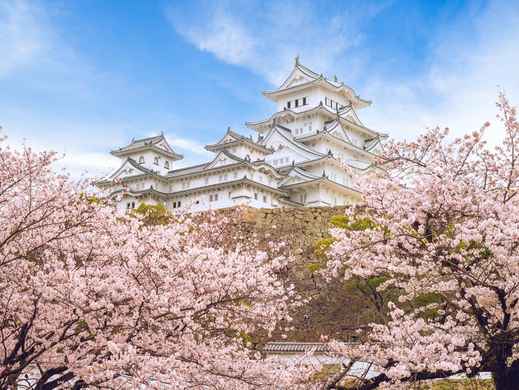


Wakayama
Asia
/
Japan
/
Wakayama
Nestled along the rugged Pacific coastline of Japan's Kii Peninsula, Wakayama Prefecture offers a breathtaking fusion of natural beauty and cultural richness. With its mountainous terrain and mild maritime climate, this region provides an idyllic escape from the hustle and bustle of city life. Wakayama's local culture is deeply rooted in ancient traditions, yet it embraces a laid-back, modern lifestyle that perfectly complements its stunning landscapes.
What truly sets Wakayama apart is its remarkable natural wonders. The iconic Kumano Kodo pilgrimage trails wind through primeval forests and lead to sacred shrines, offering a transformative journey for spiritual seekers and outdoor enthusiasts alike. The Nachi Falls, a spectacular waterfall cascading over towering cliffs into the Pacific, is a sight to behold. And for those seeking respite, the soothing hot springs of Kawayu Onsen provide a rejuvenating escape amidst tranquil surroundings.
Culinary delights are another highlight of Wakayama. The region is renowned for its succulent Kushi-Katsu (deep-fried skewers), as well as its exceptional seafood, including the prized Kumanoko Awabi (abalone) and the delectable Kishu Binchotan-Yaki (charcoal-grilled fish). Exploring the local cuisine is an adventure in itself, offering a taste of Wakayama's rich cultural heritage.

Travel Tips for Wakayama
What you need to know before traveling here
Getting Around Wakayama
A guide to Wakayama's local transportation
Taxis are readily available in urban areas and near major transportation hubs. They can be convenient for shorter distances or when traveling with luggage. Major taxi companies include Daiwa Taxi and Wakayama Taxi. Rideshare services like Uber are also available in some parts of Wakayama, offering a convenient alternative for getting around.
Practical Tips for Wakayama
Things to prepare and best way to visit
The spring (March to May) and fall (September to November) seasons offer mild temperatures and fewer crowds, making them ideal for outdoor activities and exploring the region's natural beauty. Summer can be hot and humid, while winter brings cooler temperatures and the occasional snowfall in mountainous areas.
Immerse yourself in traditional Japanese culture by attending a tea ceremony, participating in a calligraphy or origami workshop, or experiencing a traditional ryokan (Japanese inn) with onsen (hot spring) baths. Wakayama is also known for its spiritual heritage, with opportunities to join guided pilgrimages along the Kumano Kodo trails.
Japanese culture values politeness and respect. It's essential to remove shoes when entering homes, temples, or certain establishments. Additionally, it's considered impolite to talk loudly in public or point directly at people. When visiting shrines or temples, dress modestly and follow the established rules.
English proficiency can be limited in rural areas and among older generations, but most major tourist attractions, hotels, and restaurants in cities like Wakayama and Tanabe have staff who can communicate in English. Learning a few basic Japanese phrases can go a long way in showing respect and facilitating communication.
Wakayama Airport is served by shuttle buses and taxis. You can also take the Nanki-Kumano Railway from the airport to Wakayama Station and then transfer to local transportation to reach your destination.
See All Practical Tips for Wakayama

Explore Wakayama
Create your itinerary with our top picks below

Travel Tips for Wakayama

Explore Wakayama
More Destination Near Wakayama






















 Facebook
Facebook Instagram
Instagram TikTok
TikTok Youtube
Youtube Telegram
Telegram
